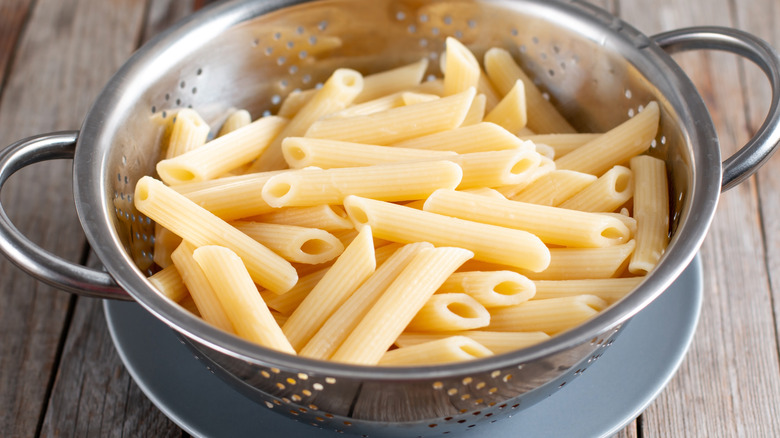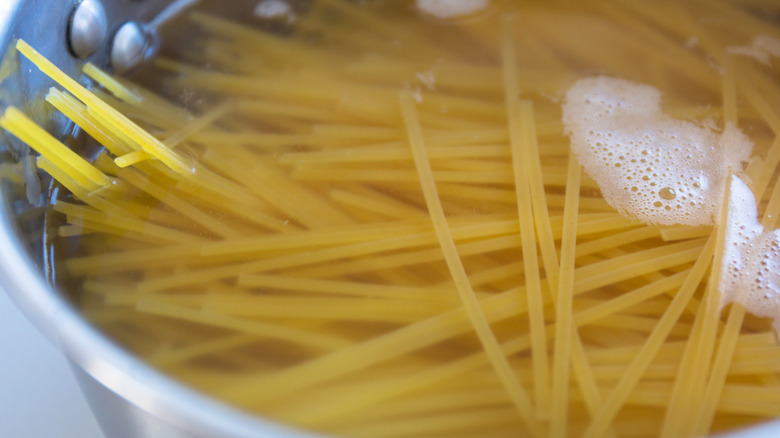Why Your Colander May Be The Reason Your Pasta Is Overcooked
There are three basic tenets universally upheld by all who participate in the modern pasta discourse. The first maintains that the water in which you cook your pasta should taste as salty as your tears (on the modest end) or the ocean (on the less-modest end). The second requires you to save at least a cup of that starchy pasta liquid for sauce-emulsification purposes, even if you don't use it in the end. And the third espouses the virtues of an al dente bite, which is defined by Merriam-Webster as "cooked just enough to retain a somewhat firm texture" and whose Italian translation is "to the tooth."
More often than not, recipes have you remove your pasta from its boiling cauldron at the al dente stage to prevent it from getting overcooked while it's being tossed in the simmering sauce. According to Barilla, pasta that's cooked al dente also allows the food to perform its maximum energy-giving power. If you're intentionally undercooking your pasta to reach al dente perfection but are still finding yourself with overcooked noodles, it's probably your colander.
Size matters
After years of testing, Kate Shannon of America's Test Kitchen found that many colanders on the market don't allow the pasta to drain its liquid quickly enough to save it from overcooking. "With a poorly designed colander, your pasta can continue to cook for a surprisingly long time after you take it off the stovetop," she says. To amend this issue, Shannon recommends looking for colanders that have even ventilation, which means a lot of "tiny perforations" instead of big holes at the base. "Even though the holes are relatively large, all of those big sections of metal cause water to drain very slowly," she adds.
Food Network's 2022 roundup of the five best colanders and strainers seems to follow Shannon's advice. The list notes that metal and micro-steel colanders work best for "heavy duty jobs" and hot water, while less expensive plastic ones are better used for cold-rinsing berries, beans, and veggies.
Hold the water
Before you fill up a giant pot with water to cook a couple of servings of pasta, consider using a wide, shallow pan instead. Frequent viewers of "Kenji's Cooking Show" have seen J. Kenji Lopez-Alt employ the low-water method in a number of recipes, including his video for quick pasta sauce with fresh tomatoes. He uses just enough water to cook the pasta without it sticking to the bottom, noting that less water will make the liquid extra starchy, thus yielding a beautifully emulsified sauce. Plus, it means you're cutting back on a valuable resource.
Several commenters on a Reddit thread vouch for the method. "There is no downside to extremely starchy pasta water," writes one user. "This is the greatest tool most Italian restaurants have and is a huge contributor to the way the sauce clings to the pasta and gives everything a certain silkiness not found in most home-cooked Italian meals."


